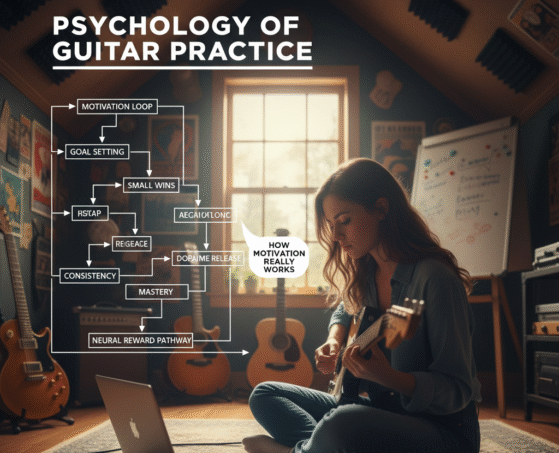Essential Keyboard Techniques for Beginners
Learning the keyboard is one of the most exciting musical journeys a beginner can start. Whether you dream of playing your favorite songs, performing on stage, or building a foundation for professional music training, mastering the keyboard techniques for beginners is the first essential step.
In this comprehensive guide, we explore posture, hand positioning, finger exercises, scales, chords, rhythm skills, pedal techniques, and beginner-friendly practice strategies. This blog covers everything a new keyboard learner needs to grow confidently and musically.
Why Keyboard Techniques for Beginners Matter
Many beginners jump straight into playing songs — and while that’s fun, skipping foundational techniques can lead to:
Bad posture
Slow progress
Incorrect finger habits
Difficulty playing faster songs
Wrist or finger strain
By learning proper keyboard techniques for beginners, you build long-term success, speed, accuracy, and confidence.
1.Keyboard Techniques for Beginners: Correct Sitting Posture

The first step in learning keyboard techniques for beginners
Good posture prevents fatigue and improves your playing quality.
- Sit at the middle of the keyboard
Keep your back straight
Feet flat on the floor
Elbows slightly above the keys
Maintain relaxed shoulders
Sit a little forward (not leaning back)
✔ Why posture matters:
Prevents pain in shoulders & wrists
Improves hand movement
Helps you play longer sessions
Increases accuracy and control
2. Hand Positioning as Part of Keyboard Techniques for Beginners
Hand position is one of the core keyboard techniques for beginners.
✔ Basic rules:
Curve your fingers like holding a small ball
Keep wrists lifted — not dropping or bending
Don’t use flat fingers
Use fingertips, not the pads
✔ The “1–5 Finger Number System”
Every finger has a number:
Thumb – 1
Index – 2
Middle – 3
Ring – 4
Pinky – 5
You will use these numbers constantly when reading sheet music.
3. Beginner Keyboard Techniques for Scales & Finger Placement

No matter what genre you want to play — pop, classical, jazz — scales build speed, coordination, and agility.
⭐ Essential Scales for Beginners:
C Major (no sharps/flats)
G Major (1 sharp)
F Major (1 flat)
These help beginners feel comfortable with finger crossing and smooth transitions.
✔ Why scales matter:
Build finger strength
Improve hand movement
Train your ears
Prepare you for advanced songs
Daily practice: 5 minutes of scales = huge improvement.
4. Finger Independence Exercises for Keyboard Beginners
Beginner keyboards are easy to play, but playing well requires finger control.
⭐ Try these exercises:
1. Hanon Practice #1
Strengthens all fingers and improves evenness.
2. Five-Finger Patterns
C–D–E–F–G
Repeat slowly → increase speed gradually.
3. Finger Lifts
Lift each finger individually while keeping the rest still.
✔ Benefits:
Smooth playing
Better accuracy
Faster finger speed
Solid coordination
5. Basic Chords: Essential Keyboard Techniques for Beginners

Most modern songs use simple chords. Learning them early gives beginners instant confidence.
⭐ Must-learn beginner chords:
C Major
G Major
F Major
A Minor
Once you know these four, you can play hundreds of songs.
✔ Practice Tip:
Practice each chord for 30 seconds → then switch quickly between them.
6. Rhythm Skills: A Core Keyboard Technique for Beginners
Timing is vital in all keyboard playing.
⭐ Tools to improve rhythm:
Clap rhythms before playing
Practice slow, then increase tempo
⭐ Rhythm exercises:
1-2-3-4 count
Quarter note / half note patterns
Simple left-hand rhythms
Good rhythm = professional sound.
7. Left & Right Hand Coordination for Keyboard Beginners

Beginners struggle most with using both hands at the same time.
⭐ Start with:
LH chords + RH melody
RH scales + LH single notes
Hands separately, then combine
✔ Coordination improves when:
You slow down
Stay relaxed
Practice small sections repeatedly
This technique accelerates learning more than anything else.
8. Pedal Control Techniques for Keyboard Beginners
The sustain pedal is exciting — but beginners often misuse it.
✔ Do this:
Press pedal AFTER playing a note, not before
Lift pedal whenever chords change
Aim for clean sound, not mushy sound
⭐ Beginner exercise:
Play C – G – Am – F while changing pedal after each chord.
9. Reading Music: A Key Keyboard Technique for Beginners
Learning basics of sheet music empowers you to play anything.
Learn:
Treble clef (right hand)
Bass clef (left hand)
Note values
Ledger lines
Simple rhythm patterns
This skill opens the entire world of music.
10. Practice Routine to Improve Keyboard Techniques for Beginners
| Activity | Time |
|---|---|
| Posture & Warm-up | 1 min |
| Scales | 2 min |
| Finger exercises | 2 min |
| Chords practice | 2 min |
| Song practice | 3 min |
11. Mistakes Beginners Make While Learning Keyboard Techniques
Flat fingers
Stiff wrists
Too much pedal
Practicing fast before accuracy
Skipping warm-ups
Pressing keys too hard
Avoiding these mistakes accelerates growth dramatically.
Best Songs to Apply Keyboard Techniques for Beginners
Perfect choices:
“Ode to Joy”
“Twinkle Twinkle Little Star”
“Happy Birthday”
“Perfect” (Ed Sheeran – simplified)
“Stay With Me” (Sam Smith – simplified)
These reinforce essential keyboard techniques for beginners.
Final Thoughts on Keyboard Techniques for Beginners
Mastering these essential keyboard techniques for beginners prepares you for advanced playing, better musicality, and faster growth. Whether you’re learning for fun, exams, or performance, good technique is the foundation of every great keyboard player.
With consistent practice and the right guidance, anyone can become a confident and expressive musician.
Intersted in learning music with us? Register now
For more information and exciting resources about learning music, visit our website at The Mystic Keys. For more music content and exciting offers follow us on
Facebook, Instagram, YouTube, LinkedIn, Twitter, Pinterest, and Threads.








